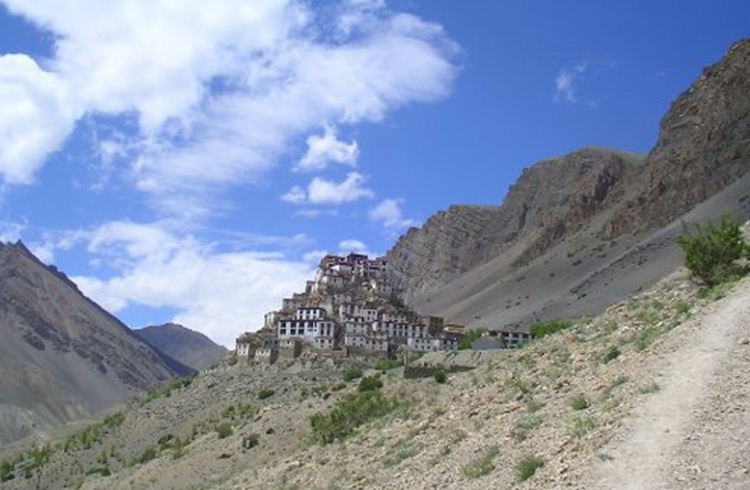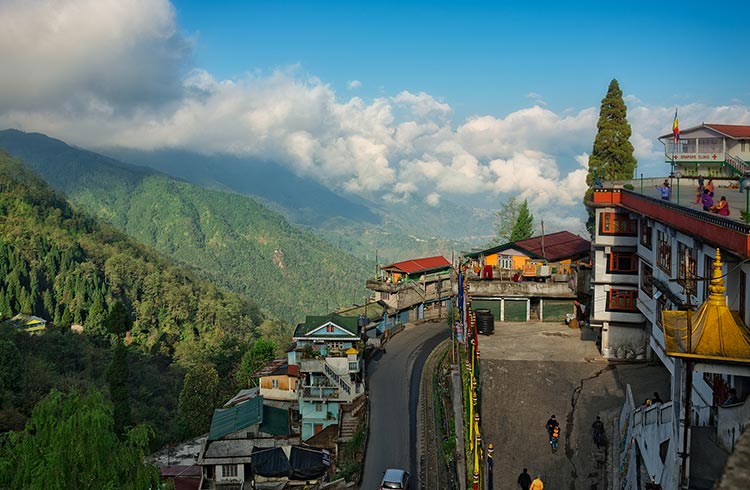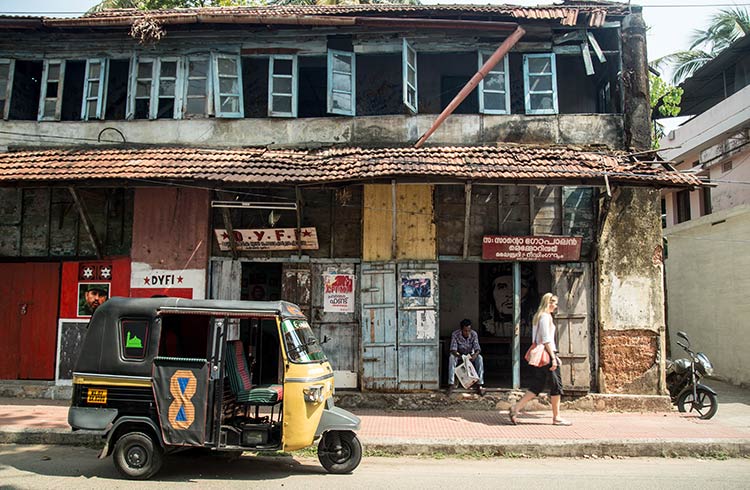How to Explore India's 3 Magnificent Deserts
Shivya Nath shares her tips on the three diverse but equally spectacular deserts in India: the Trans-Himalayan, the White Salt Desert of Kutch, and the Sandy Thar Desert in Rajasthan.
 Photo © Shivya Nath
Photo © Shivya Nath
When used in the context of India, the word "desert" often conjures up images of massive, golden sand dunes, of camels bumpily walking towards the horizon, of colorfully clad men and women going about their chores, of bonfires at night, of starry skies. Seldom does the word sketch the stark, mountainous Himalayan desert, or the gleaming white salt pans of Kutch, that are far less traversed by travelers, despite being equally, if not more romantic than the great Rajasthani desert.
Ladakh and Spiti: the Trans-Himalayan cold desert
This dramatic landscape includes the regions of Ladakh and Spiti. As you climb atop the mountains on the roof of the world, walk along gushing rivers, see curious summits staring at starry skies, float along blue streams in deep gorges, traverse the highest inhabited villages in the Himalayas, and follow centuries old Buddhist trails, the Himalayas reveal to you a magnificent desert that is hard not to fall in love with.
No amount of research or pictures on Google could have prepared me for the mountain desert of Spiti in Himachal Pradesh. On the leeward side of the mighty Himalayas, Spiti is home to some of the starkest, most stunning landscapes made by the bare brown mountains, which receive abundant sunlight and snow, but no rain. Almost no vegetation can survive on such rough terrain, making the slightest hint of greenery or color a treat for the eyes.
Despite extremely harsh living conditions, and populations as low as 35 people to a village, Spiti is home to some of the most hospitable mountain folk in India, deeply rooted in the teachings of Buddhism. In winter, when temperatures dip below -22°F (-30°C) and the valley practically shuts off from the rest of India, life in this mountain desert becomes extremely introspective, and often interspersed with colorful festivities and celebrations to make it through the cold (without any automated form of heating).
Practical information
The best time to visit Spiti is during the summer months from May to September. The shorter route via Manali takes 8-12 hours, while the longer route via Shimla warrants an overnight stop at Kalpa / Reckong Peo. Both Manali and Shimla are well-connected to the rest of India via buses and trains. Local homestays are the best lodging options.
The Rann of Kutch
Whoever says brown is the dominant color of a desert hasn’t been to the large expanse of bright white salt that is the Great Rann of Kutch, in the state of Gujarat along the west coast of India. On any winter night, this white desert lights up with the reflection of the moon and the millions of stars that twinkle in its sky. There’s nothing but white as far as you can see, nothing but you and the vastness of the desert.

The Rann (Hindi word for desert) was originally part of the Arabian Sea, until a geological rising of the seabed disconnected it from the sea, forming a vast lake whose lower reaches gradually dried up, leaving a salty marshland. The desert is submerged under water during the monsoon season, which makes it a breeding ground for flamingoes, the India wild ass, and several other exotic birds and wildlife; a real treat for bird watchers and animal lovers.
Beautiful little hamlets along the desert add color to the white Rann, with their vibrant festivities, upbeat music and dance forms, and intricate art and crafts. The warm hospitality and the rich culture of this spectacularly bewildering terrain, mixed with the local folklore, will lure you into the heart of the desert. It is believed that Chir Batti, aka ghost lights, can be spotted on exceptionally dark nights in the desert.
Practical information
The best time to visit the Rann of Kutch is in the winter months from October to March, when the water dries up to reveal the magical white of the desert. The closest railhead and airport is at Bhuj, and the best accommodation options are at Dhordo and Hodka, from where the Rann is easily accessible.
The sandy Thar Desert
The Thar Desert, also known as the Great Indian Desert, is India's largest and most famous desert. Some 60% of if lies within the state of Rajasthan in northern India. You are perhaps already familiar with the golden Rajasthani desert, where the magnitude of the vast, sandy expanses never fails to humble the soul, where everything from sunrise to sunset is a spectacle of colors, and where dark nights are lit by bonfires and stories of nomadic desert lives. Beyond the last major city of Jaisalmer, the desert stretches to the horizon and is littered with small settlements, sometimes with just half a dozen huts to a village, where life is akin to the desert itself: sweltering hot in the day, freezing in the night, evidently difficult, and yet by some measure, heart-warmingly beautiful.

Practical information
The best time to visit the Rajasthani desert is in the winter months from October to March, when the temperatures don’t soar as high during the day as they do in the summer. Jaisalmer, the nearest major city, is well connected to the rest of Rajasthan by buses and trains. Jeeps and camels are the best way to explore the desert beyond. Local village homestays offer an intimate way to experience this desert.
About the Author
Shivya Nath is a 20-something Indian girl with a penchant for offbeat destinations that few have been to, and fewer have written about. She blogs at The Shooting Star and her travelogues have appeared in leading Indian & international publications, including The Times of India, The Air India Magazine and CNNGo, among others. She co-founded India Untravelled with an aim to introduce travel enthusiasts to offbeat travel experiences in rural parts of India, where hospitality comes innately to the people and a traditional, earthy way of life can still be experienced. Follow her on Twitter - @shivya.
Related articles
Simple and flexible travel insurance
You can buy at home or while traveling, and claim online from anywhere in the world. With 150+ adventure activities covered and 24/7 emergency assistance.
Get a quote


No Comments